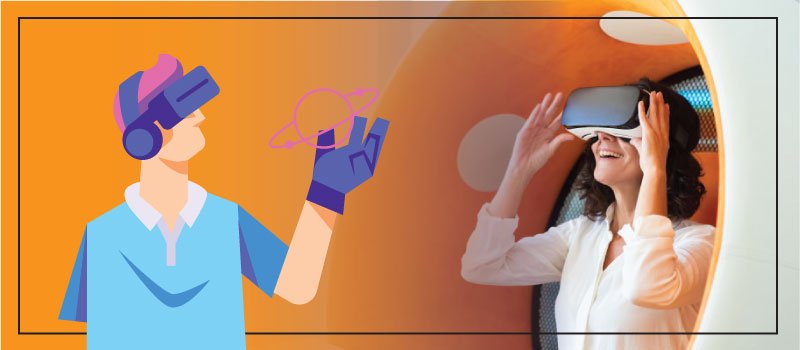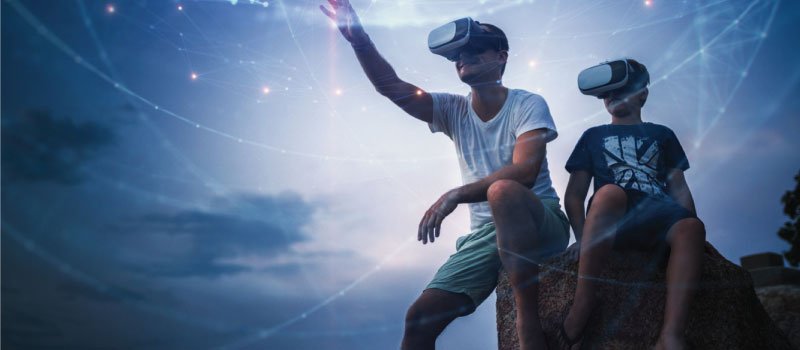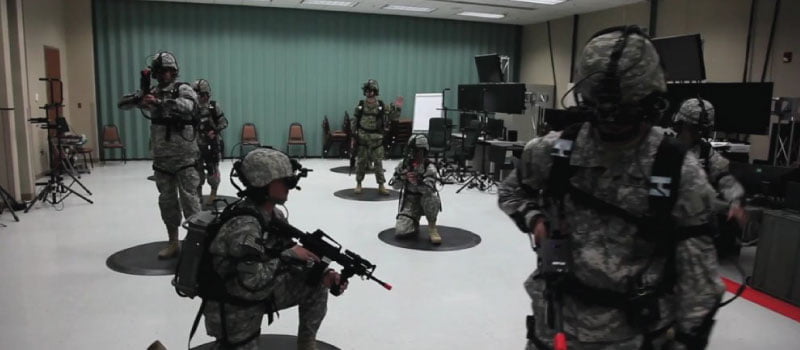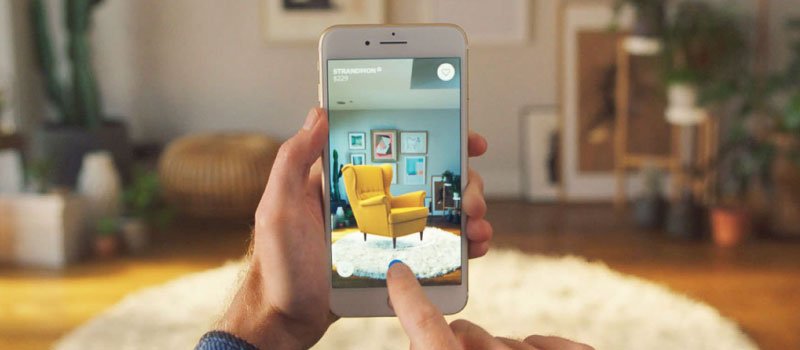You probably have heard of AR/VR/MR technologies in the past. They are collectively known as XR (extended reality). For most people, these terms are quite abstract and often perceived as the science-fiction in Hollywood movies. But the infiltration of computer-generated objects already exists in our lives, we just don’t realise as a user.
You might have tried to catch Pokemon in recent times or using bitmoji with the Snapchat camera. That is actually AR (Augmented Reality). There are various other groundbreaking use cases of AR in several industries. Many tech companies and engineers around the globe are working to implement these technologies into business operations to bring efficiency.
What is the Extended Reality (XR)?
Extended Reality (XR) is an umbrella term for all the immersive technologies including Augmented Reality (AR), Virtual Reality (VR), and Mixed Reality (MR). All the technologies that extend reality by blending virtual worlds with the real or creating only virtual worlds are included in XR, including those technologies that are still to be developed. A recent survey revealed that more than 60% of respondents voted for XR being the mainstream in the upcoming five years. Following are the technologies included currently in the XR technologies:
AR – What is Augmented Reality?
Augmented Reality (AR) is a technology that provides a view of the real-world environment with superimposed computer-generated elements (graphics), which ultimately changes real-world perception. In other words, it is the technology that adds layers of digital information to the real environment.
Unlike Virtual Reality (VR), AR doesn’t create a whole artificial surroundings that replace the real world. AR modifies the existing real-world environment with elements like sounds, motions, and graphics.
The term Augmented Reality (AR) was coined back in 1990. The initial commercialisations of AR were in the television and military sector and the rise of smartphones and internet connectivity has introduced a second wave, introducing AR into the common man’s life.
The technology is massively improving the manufacturing sector where products are directly projected via 3D models and fused together in real-time. Also, there are many augmented reality apps that are helping individuals with their health and entertainment.
VR – What is Virtual Reality?
In almost opposition to AR, the virtual reality experience is a fully immersive simulated digital environment, which is experienced by the users through wearable gadgets i.e. VR headsets or head-mounted displays. These VR gadgets provide users with a 360-degree view into the completely artificial world that literally fools the brain into believing that it is the reality.
Many tech companies and VR developers have created artificial environments using VR technology, i.e. swimming underwater, walking on mars, battlefield, and many more. The gaming and entertainment industry are the early adopters of VR technology and many other industries including healthcare, military, education, engineering are pilot testing VR for several use cases.
MR – What is Mixed Reality?
Though this technology is still in its initial stage, Microsoft has tested it with their product HoloLens. It allows users to place a virtual digital object into the real environment (your room) and gives the users an ability to move, spin or interact with that digital object.
Also known as hybrid reality, the mixed reality is where the real and digital world objects co-exist and can interact with each other in real-time. MR technology requires very high processing power as compared to AR and VR. There are many tech companies that are exploring the possibilities where they can put MR to work.
Top 5 AR and VR trends in 2021
The year 2019 was a golden year for technological advancements, where we saw disrupting technologies such as AI & ML, AR & VR, and IoT flourishing. The XR (AR & VR) technologies have specifically shown their potential in the fields of gaming and entertainment.
IDC forecasted that the worldwide spending on XR is expected to grow with 78.5% from 2019 to reach $18.8 billion by the end of this year. The industry experts believe that we’ll witness a whole new load of next-gen XR powered gadgets that will provide users with immersion and realism of a greater extent. However, the industrial usage of XR has outpaced gaming and entertainment.
Industrial Use of AR & VR technologies is outpacing the consumer-oriented implementations
The first interaction most people have with XR technologies is in gaming and entertainment. This may be the reality till now, but it won’t be in future as some research shows that the industry’s focus is shifting towards enterprise XR solution development.
The report by VR Intelligence states that 65% of AR development companies are working on building AR-powered industrial applications whereas only 37% are working on consumer applications and gadgets.
Although the recent popular implementation of XR in consumer applications such as Facebook’s Oculus Rift and Pokemon Go has made the headlines, this industrial trend of XR isn’t surprising as it’s potential to boost productivity and ensure safety was a lucrative proposition for the enterprises.

Virtual Reality technology can be used to simulate working in hazardous environments or with unavailable expensive equipment that are yet to be procured. On the other hand, Augmented Reality technology can be used to inform the users about things that can happen in front of them. For example, eliminating the need for manuals by providing engineers and technicians with AR-equipped tools that help them identify the issue by just looking at them.
Healthcare Adopting XR
The potential applications of XR into healthcare are obvious and post 2020, we’ll surely see many use cases transitioning from pilots to complete solutions. VR has already been implemented in several therapeutic areas such as treating patients with anxiety and phobia disorders. The technology has been coupled with several other healthcare technologies such as biosensors that help therapists understand and monitor the patient’s physiological reactions. VR is also used in helping patients with autism disorder. It helps them develop their social and communication skills.
The AR implementation in healthcare is expected to grow faster than VR. It has a larger market share and will grow at the annual pace of 38% until 2025. AR can be used by surgeons – both during training and in OT (Operation Theater) – to assist them during hazardous situations. (The Augmented Reality Apps can guide the nurses to find patient’s veins which help to avoid accidental injunctions)
The headsets will go smaller and more mobile
One limiting factor with the current state of XR technology is the need for encumbering hardware units which makes it cumbersome for their use case. For example, the XR devices in the most recent past required powerful processing hardware to generate the high-quality graphical information, and these processors either had to be contained within the device or be tethered via wires.
This issue has started to be addressed recently as Facebook’s Oculus headset, which initially required to be connected to a powerful processor or PC, have now become more mobile with the self-contained Oculus Quest version.
Furthermore, mobile headsets will be powerful enough to provide the users with a realistic VR experience as the mobile processors are upgrading over time. While the earlier days of VR experience was solely computer-generated using low-resolution polygons, the world after 2020 will be very near to reality and will provide the users with a more immersive experience.
The most likely breakthrough is supposed to be Apple’s upcoming 8K AR/VR glass that will not be tethered to a phone or computer. The consumer tech giant, Apple believes that it will be a breakthrough in XR technology implementation.
The 5G technology opens up the space for XR
In the recent few years, streaming XR has been possible, but in a limited way. Youtube and Facebook have enabled you to stream XR but the experience wasn’t up to the mark due to low data transfer speeds. The 5G networks, combined with the cloud computing, can make a significant difference in the feasibility of XR technology.
The high-speed data transfer powered by 5G mobile network will boost the growth of XR technology during and after 2020. The 5G networks have the potential to transfer data with a speed of up to 3 gb per second.This contrasts to current average home broadband, which deliveries an average of 100 mb per second. It means the 5G network will be fast enough to stream XR data from the cloud. With the streaming capability, the XR viewing devices will be able to upload data to the data centres whenever heavy processing is required. The rendered graphics (data) can be delivered back to the XR device in real-time using the speed provided by 5G networks.
Technology will help us educate
The XR technologies will be more common during and after 2020 which will allow them to expand to several industries. The XR technologies have an immersive nature and because of this, it is easy for the pupils to interact with and learn. XR technology will bring flexibility in learning while making it a fun activity at the same time.
The technology is already helping students. Nowadays students can take a trip through time to visit and learn about ancient civilizations, history, space and experience the conditions.

But as the XR technologies will be easily available and accessible, we will see it as part of our education system. It will shift from providing experiences to bridge the gaps in the current education system. For example, distance learners can be taught via VR so they don’t miss out the benefits of classroom learning. While, the AR technology can help students with skill enhancement by providing them with training that is similar to the real scenarios.
Enterprise Use Cases of XR
XR has many real-world applications for enterprises. Here are some of them:
Training:
Companies train their workforce in many circumstances, including some hazardous ones and expensive ones. In such scenarios, XR technology can help them achieve their training goals by providing them with training tools that are hyper-realistic. Training for pilots/astronauts, healthcare professionals, soldiers, chemists, and many other professions can be conducted via XR environments. It ensures that the workforce learns how to respond in hazardous circumstances without risking their lives.

- Retail:
Modern customers require a modern shopping experience, and XR technology can provide them with the ability to try products before they buy. In fact, the watch manufacturer Rolex has already done the implementation of an AR app that allows the users to try on the watches on their wrist. Another company IKEA, the furniture seller, is allowing customers to virtually place the furniture into their home through the AR app.

- Marketing:
Using XR technology, marketing professionals can engage with their prospects. It will allow them to demonstrate products or services without actually carrying them.
- Remote Working:
This concept is hypothetical until it actually rolled out, but there is a high possibility that in the near future we might witness virtual workspaces where professionals will feel like they are in the same room irrespective of their real location.
- Real Estate:
Real estate always had trouble with their sales as it required the buyer to physically visit the site to make their decision. With the help of XR technology, it will no longer be the reality, in fact, companies are working on solutions, where the buyers can easily walk through (of course, virtually) the home/commercial real estate.
- Entertainment:
Thanks to their early adoption, there are many XR technology use cases that the gaming and entertainment industry is currently utilising. Tech giants like Oculus are continuously finding more ways to utilise XR.
Challenges of XR
- The XR technology development companies face challenges of mainstream adoption due to data security. XR technologies require very sensitive data as it collects and processes personal data related to what an individual does, what he looks at, and the surroundings.
- In addition to this, the cost of XR technology implementation also needs to come down. The high cost makes it difficult for many enterprises to invest in this technology.
- The hardware devices need to be more mobile in order to improve the adoption. Currently, the XR devices are bulky and uncomfortable to use.
With each passing day, we are getting one step closer to solving the challenges with XR technology. The future holds several mainstream applications of XR technologies that will help businesses achieve the operational efficiencies and customer satisfaction.

Niketan Sharma is the CTO of Nimble AppGenie, a prominent website and mobile app development company in the USA that is delivering excellence with a commitment to boosting business growth & maximizing customer satisfaction. He is a highly motivated individual who helps SMEs and startups grow in this dynamic market with the latest technology and innovation.
Table of Contents












No Comments